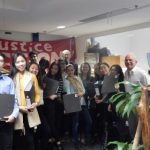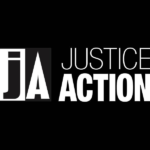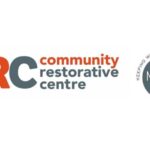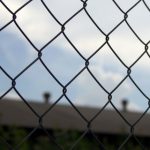The Creativity of Inmates: An Interview With Paper Chained Magazine Editor Damien Linnane
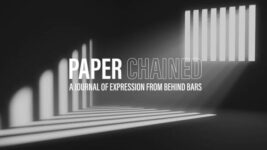
US Professor Angela Davis remarked in an interview with Democracy Now last December, that she was “absolutely surprised” that the concept of prison abolition has “entered into public discourse during this period”.
Davis, a key abolitionist, and her colleagues hadn’t expected the campaign, which calls for societies to dismantle systems of incarceration, to enter popular consciousness for “perhaps 50 years”, as, until a little while ago, it had been a fringe issue.
However, the footage of George Floyd being killed by Minneapolis police officers, and the resulting upsurge in the Black Lives Matter movement, changed this dramatically, with the questioning of the role that corrections and law enforcement play in our systems becoming mainstream.
And with this, so too has the understanding that abolishing prisons doesn’t just mean tearing down the walls and letting everybody run riot. Rather, it entails establishing broad social reforms that lead to a more equitable society, with the perceived need for gaols and imprisonment receding.
Creative pursuit has long been understood as a means of transforming negative emotions, and in that way, not only is quarterly magazine Paper Chained, a publication by prisoners-for prisoners, helping inmates reform individually, but, more broadly, it’s abolitionist in nature.
A journal of expression from behind bars
First launched in 2017, Paper Chained is a magazine that appears online and in print and features the writing of inmates, ex-prisoners, their family members or work connected with the corrections system. The hardcopy magazines are posted for free to prisoners inside.
The sixth edition of Paper Chained has just gone live. Indeed, the first article in the new addition is titled, A Future Without Prisons, and it posits that “if we maintain our current course, the future of prisons is an ever-expanding series of storage facilities for broken people”.
The author, Stacey Stokes, goes onto explain that moving towards an incarceration-free society would require delving into the reasons for behaviour that leads to imprisonment, and providing healing and education to help move beyond it.
“A future without prisons is a world where we all have a place and no one is left behind,” Stokes concludes.
The creative outlet
The majority of funding for Paper Chained comes from the Community Restorative Centre, which is a Sydney-based organisation that provides a range of services to people involved in the criminal justice system and their families.
Damien Linnane is the editor of Paper Chained. Having spent time in prison himself and written the novel, Scarred, whilst in there, Linnane understands the importance that a creative outlet can have for those inside.
So, when asked to take over the reins of the publication, he had to agree.
Sydney Criminal Lawyers spoke to Paper Chained editor Damien Linnane about the impact the magazine has upon those who are involved with it, the new prison computer tablet program that will allow inmates to access the publication online, and what he’s looking for in terms of content.
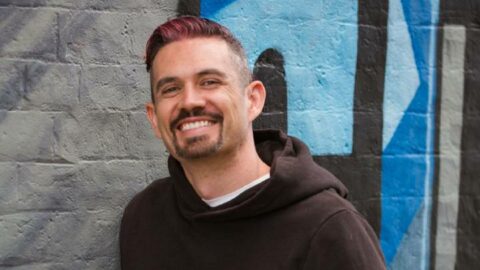
Damien, since May last year, you’ve been the editor of Paper Chained. Why would you say a magazine by prisoners-for prisoners is important?
The thing that makes my job the most worthwhile is the feedback I get in the letters from prisoners.
People frequently tell me how much difference simply getting some mail can make to their day, something I know all too well from personal experience.
But what I hear the most is how much difference it makes to know there is a publication that specifically gives them a voice, understands what they’re going through and is catered to them directly.
Paper Chained is what I needed when I was in prison. I had so much I wanted to express, but there was no way for me to share anything I had created with the world. My artwork and writing just gathered in a box under my bed.
How would you describe the types of articles and other pieces of artistic expression you’ve been receiving for the issues? How would you say the subjects that are touched upon reflect the prisoner experience?
The majority of the submissions we get are poetry: that definitely seems to be the preferred way people like to express themselves.
Not surprisingly, most of it is heavily themed on prison. I’ve definitely read a lot of work with themes of feeling trapped, hopelessness and regret.
So, it’s healthy for people to have a creative outlet to express these feelings in, rather than just bottling them up.
But we get all types of writing. In our last issue, we got a piece from an inmate who just wanted to share his passion for reading.
He wrote about how reading makes him feel like he is free, which is something I can attest to personally. The only time I didn’t feel like I was in prison was when I was either reading or writing.
Unfortunately, we’re a bit limited in terms of what art we can receive from prison, as it’s pretty much whatever people can fit in an envelope.
It’s very difficult to arrange for larger artworks to be sent out, and even harder to try and get photographs taken of artwork.
Luckily, we have a relationship with Boom Gate Gallery, the art gallery attached to Long Bay, and they’re able to give us access to photographs of larger art pieces made by incarcerated people.
Corrective Services NSW has agreed to make Paper Chained available to prisoners via the new computer tablets that are being provided to inmates. This was an initiative put to the government agency by the Community Justice Coalition.
As someone who has spent time on the inside, how important do you consider this computer tablet initiative is?
I spent the first half of my sentence writing a crime novel by hand, and the second half teaching myself to draw.
I originally wanted to go back to university, but we had no computer access, and the days of the offline correspondence course ended a long time ago, so there was no way for me to study anything.
I was told that because I was assessed as low risk for reoffending and because resources were limited, I wasn’t eligible for in-person rehabilitation, and was also told there was no therapy available at all.
The most frustrating thing about prison is you have all the time in the world, but the prison doesn’t give you the resources to do anything constructive during that time.
I was lucky enough to be literate enough to write a novel, but a lot of people in prison aren’t that fortunate.
One of the reasons we campaigned for computers in cells for so long was so that inmates could access rehabilitation courses, even after lock-in and during lockdown.
Even being able to access basic education programs from your cell will make such a huge difference for people who want to change in prison.
Only 22.7 percent of inmates in NSW were able to study during 2019-20 – the second lowest state rate after Tasmania – and only 0.1 percent were able to pursue higher education.
These results have been consistent over the last several years, but hopefully we’ll start seeing a difference now that tablets have finally been introduced.
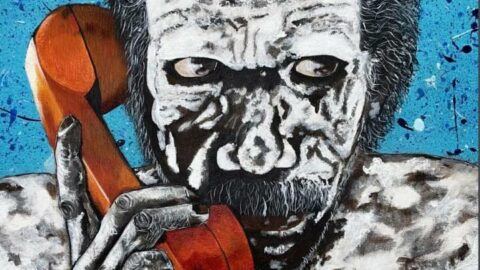
Justice Action had long been pushing for the tablets. The campaign was stepped up after the onset of COVID-19 due to the impact it had upon the conditions prisoners were kept in.
Inmates in this country were served a rough time during the pandemic due to neglect and restrictions. What are your thoughts on the situation for prisoners during the COVID crisis?
I can only really imagine how much harder prison got for people during the pandemic. Considering how isolating and depressing it was beforehand, I know it would have been much worse.
It’s a bit ironic, I get about 25 letters from people in prison a week, but one thing I’ve noticed is that people very rarely actually want to communicate about the prison itself or how things are affecting them personally, other than through art and poetry.
Writing, art, reading and education in prison is a form of escaping what’s actually going on around you, so anything that helps facilitate this is going to be welcome.
When you’re in lockdown, you normally can’t even get access to library books. I definitely think tablets in prison is a fantastic idea, one that was long overdue.
Paper Chained is primarily funded by the Community Restorative Centre. Why has this organisation prioritised such a project?
I’d been peripherally helping with Paper Chained since they first started in 2017. And in 2021, the previous editor asked me if I wanted to take over as she no longer had the time or the money to self-fund the project.
Knowing how much something like Paper Chained would have improved my mental health when I was in prison, I couldn’t say no.
But as our list of subscribers grew dramatically it became clear I’d bitten off more than I could chew.
I was getting enough contributions to publish it much more frequently than annually, which is how the magazine ran for its first five years, though replying to letters and transcribing contributions was taking up most of my free time as it was.
Then, early this year, I finished a long-term work contract as an archivist. And as I needed a new job anyway, I applied for funding to turn what I was passionate about into my dream job, and thankfully, I managed to get a 12-month contract with CRC to produce the magazine quarterly.
It really fit in with their other great projects, like Jailbreak Radio, a radio program for incarcerated people, and Songbirds, which records music made in prison.
And lastly, Damien, for those who might like to contribute or become involved with Paper Chained what should they do?
I’d really encourage people to give it a go. A lot of people seem self-conscious about whether their work is good enough, and then I’m amazed by their creativity.
Speaking from experience, a lot of writers and artists have too much self-doubt, especially when they first get started.
If you’re worried about using your real name, we can publish your work anonymously. And keep in mind, if you’re looking to make a career out of writing or art, already being published by us could give you a hand up.
People often write in asking if we’ll accept certain types of contributions, like song lyrics. And as I always tell them, if you can create it, we’ll consider printing it.
It’s only really limited by your imagination.
One thing I wish we got more of is fiction, especially since that’s what I created when I was incarcerated. I’d love to see more short stories in future issues.


